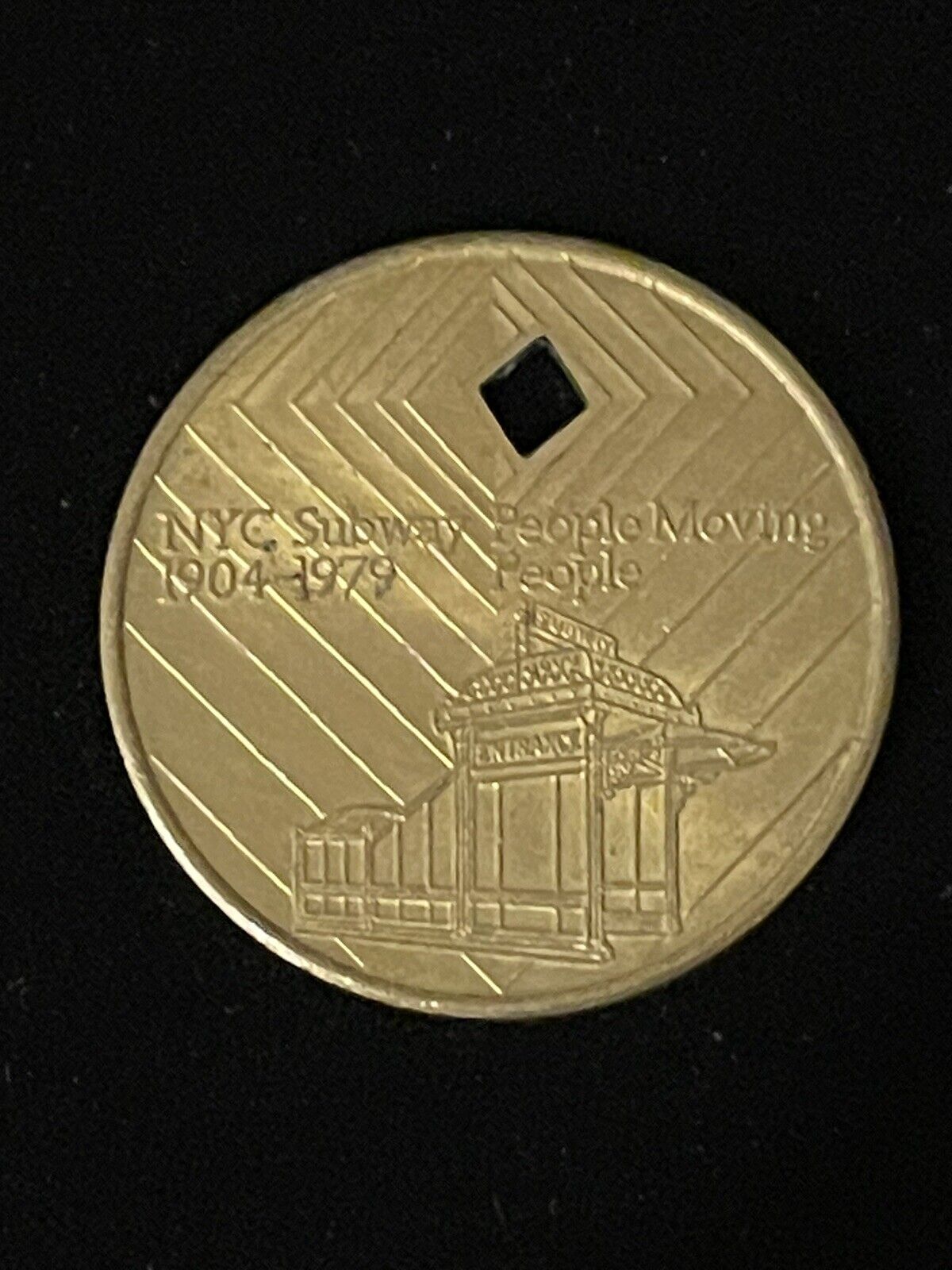-40%
New York City NYC Subway Token DIAMOND JUBILEE 1904 - 1979 People Moving People!
$ 10.55
- Description
- Size Guide
Description
7/8” New York City NYC Subway Token DIAMOND JUBILEE 1904 - 1979 People Moving People!.The New York City Subway is a rapid transit system owned by the government of New York City and leased to the New York City Transit Authority,[15] an affiliate agency of the state-run Metropolitan Transportation Authority (MTA).[16] Opened on October 27, 1904, the New York City Subway is one of the world's oldest public transit systems, one of the most-used, and the one with the most stations,[17] with 472 stations in operation[18] (424 if stations connected by transfers are counted as single stations).[1] Stations are located throughout the boroughs of Manhattan, Brooklyn, Queens, and the Bronx.
Alfred Ely Beach built the first demonstration for an underground transit system in New York City in 1869 and opened it in February 1870.[23][24] His Beach Pneumatic Transit only extended 312 feet (95 m) under Broadway in Lower Manhattan operating from Warren Street to Murray Street[23] and exhibited his idea for an atmospheric railway as a subway. The tunnel was never extended for political and financial reasons.[25] Today, no part of this line remains as the tunnel was completely within the limits of the present-day City Hall station under Broadway.
The Great Blizzard of 1888 helped demonstrate the benefits of an underground transportation system.[30] A plan for the construction of the subway was approved in 1894, and construction began in 1900.[31] Even though the underground portions of the subway had yet to be built, several above-ground segments of the modern-day New York City Subway system were already in service by then. The oldest structure still in use opened in 1885 as part of the BMT Lexington Avenue Line in Brooklyn[32][33][34][35][36] and is now part of the BMT Jamaica Line.[37] The oldest right-of-way, which is part of the BMT West End Line near Coney Island Creek, was in use in 1864 as a steam railroad called the Brooklyn, Bath and Coney Island Rail Road.[38][39][40]
The first underground line of the subway opened on October 27, 1904, built by the Interborough Rapid Transit Company (IRT) almost 36 years after the opening of the first elevated line in New York City (which became the IRT Ninth Avenue Line).[41][42][43] The 9.1-mile (14.6 km) subway line, then called the "Manhattan Main Line", ran from City Hall station northward under Lafayette Street (then named Elm Street) and Park Avenue (then named Fourth Avenue) before turning westward at 42nd Street. It then curved northward again at Times Square, continuing under Broadway before terminating at 145th Street station in Harlem.[41] Its operation was leased to the Interborough Rapid Transit Company and over 150,000 passengers[44] paid the 5¢ fare to ride it on the first day of operation.[45]
By the late 1900s and early 1910s, the lines had been consolidated into two privately owned systems, the IRT and the Brooklyn Rapid Transit Company (BRT, later Brooklyn–Manhattan Transit Corporation, BMT). The city built most of the lines and leased them to the companies.[46] The first line of the city-owned and operated Independent Subway System (IND) opened in 1932;[47] this system was intended to compete with the private systems and allow some of the elevated railways to be torn down but stayed within the core of the city due to its small startup capital.[15] This required it to be run 'at cost', necessitating fares up to double the five-cent fare of the time.[48]
In 1940, the city bought the two private systems. Some elevated lines ceased service immediately while others closed soon after.[49] Integration was slow, but several connections were built between the IND and BMT;[50][51][52] these now operate as one division called the B Division. Since the former IRT tunnels are narrower, have sharper curves, and shorter station platforms, they cannot accommodate B Division cars, and the former IRT remains its own division, the A Division.[53] Many passenger transfers between stations of all three former companies have been created, allowing the entire network to be treated as a single unit.[54]
During the late 1940s, the system recorded high ridership, and on December 23, 1946, the system-wide record of 8,872,249 fares was set.[55]: 73
The New York City Transit Authority (NYCTA), a public authority presided by New York City, was created in 1953 to take over subway, bus, and streetcar operations from the city, and placed under control of the state-level Metropolitan Transportation Authority in 1968




















